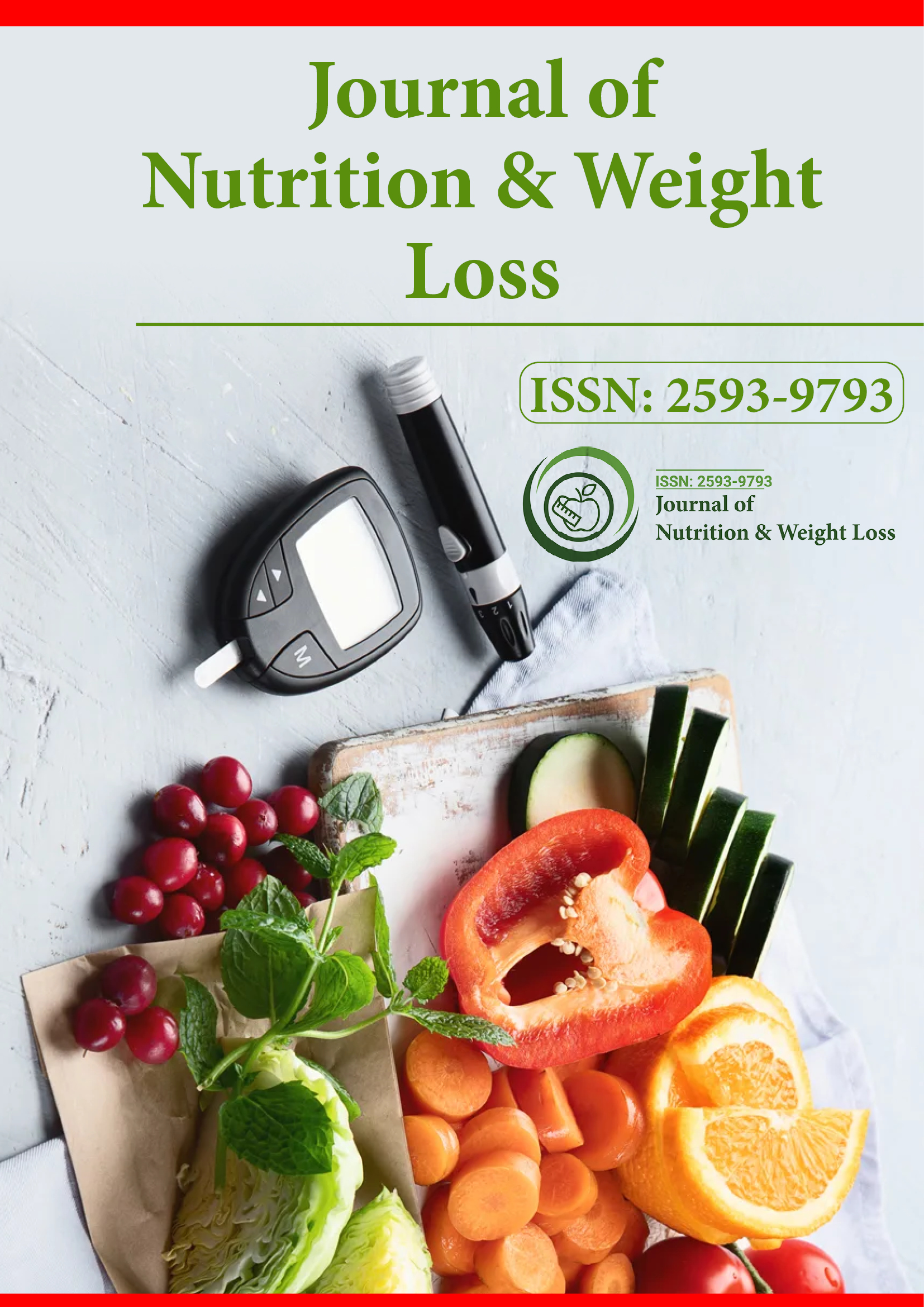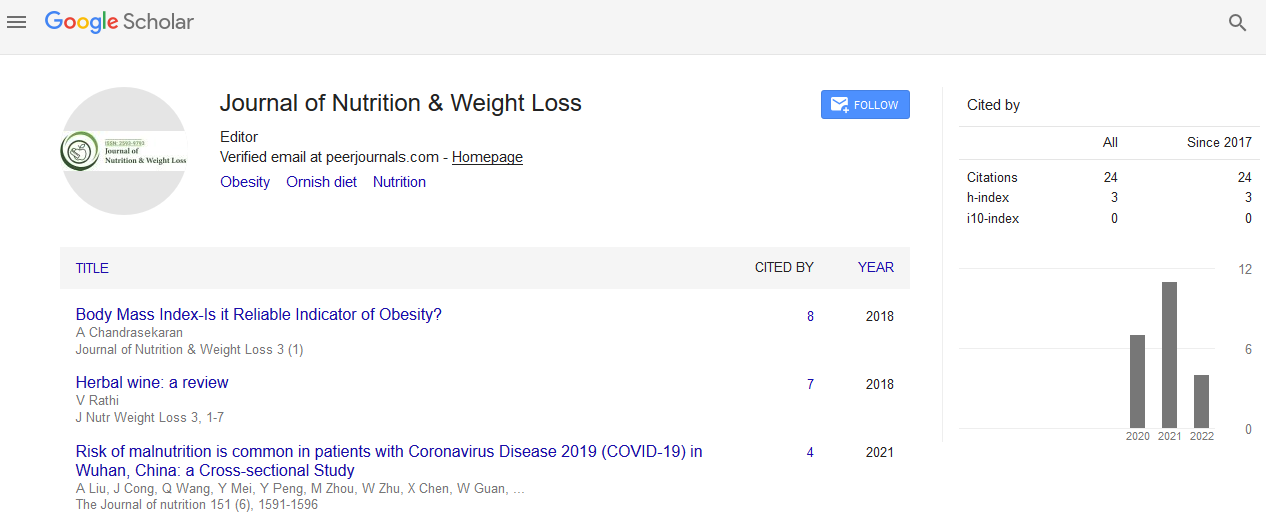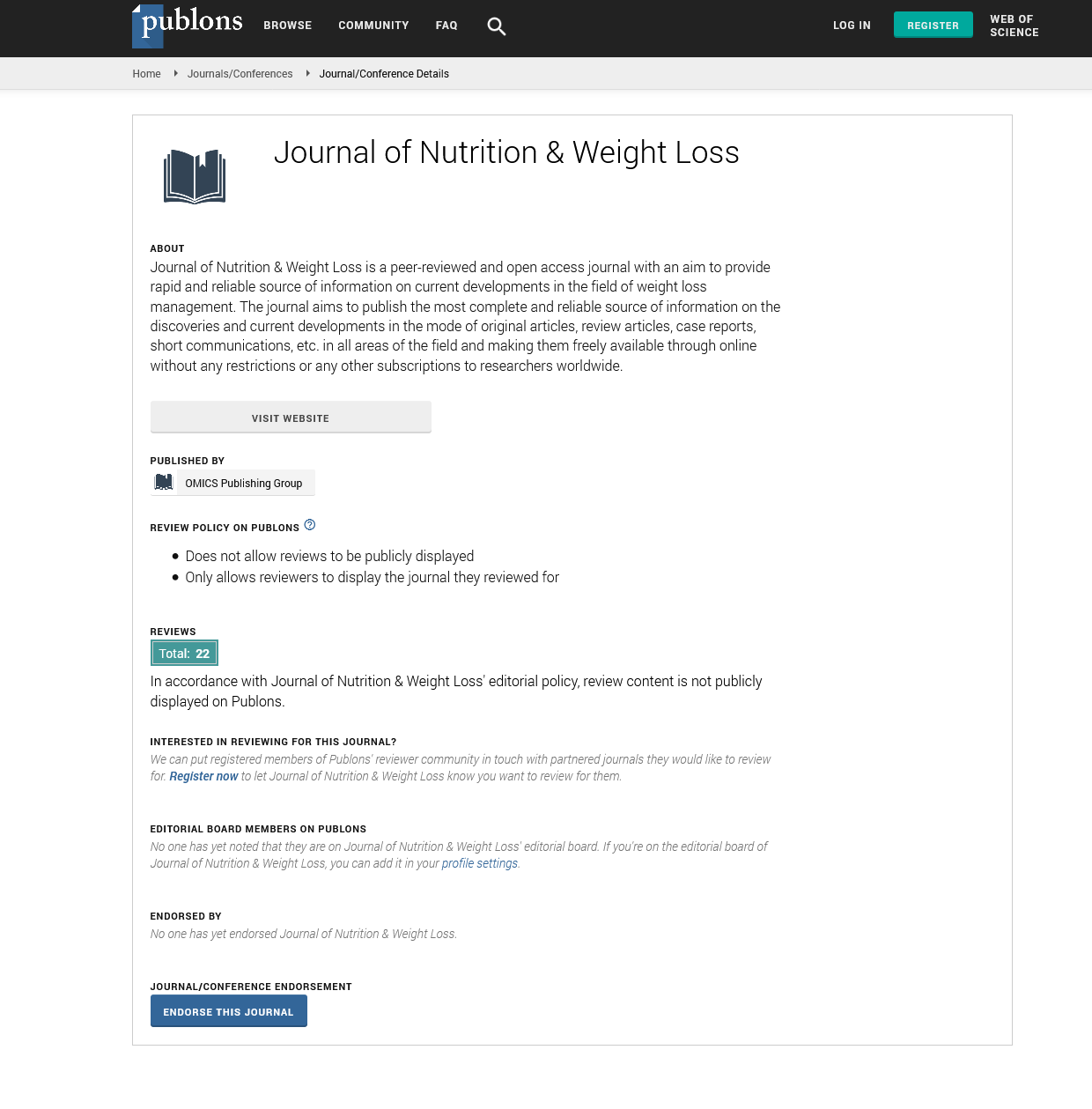Indexed In
- RefSeek
- Hamdard University
- EBSCO A-Z
- Publons
- Euro Pub
- Google Scholar
Useful Links
Share This Page
Journal Flyer

Open Access Journals
- Agri and Aquaculture
- Biochemistry
- Bioinformatics & Systems Biology
- Business & Management
- Chemistry
- Clinical Sciences
- Engineering
- Food & Nutrition
- General Science
- Genetics & Molecular Biology
- Immunology & Microbiology
- Medical Sciences
- Neuroscience & Psychology
- Nursing & Health Care
- Pharmaceutical Sciences
Commentary - (2023) Volume 8, Issue 3
Body Mass Composition: A Comprehensive Measure of Wellness
Hirashi Sato*Received: 28-Aug-2023, Manuscript No. JNWL-23-22905; Editor assigned: 30-Aug-2023, Pre QC No. JNWL-23-22905 (PQ); Reviewed: 13-Sep-2023, QC No. JNWL-23-22905; Revised: 20-Sep-2023, Manuscript No. JNWL-23-22905 (R); Published: 27-Sep-2023, DOI: 10.35248/2593-9793.23.8.175
Description
Body mass composition involves assessing and managing the balance between fat and lean mass in the body, which can impact an individual's health and fitness levels. Monitoring body composition can help individuals set and achieve their health and fitness goals. However, the traditional metric of weight, as measured on a scale, fails to capture the complexity of human physiology. Body mass composition, the proportion of fat, muscle, bone, and other tissues, is a more comprehensive indicator of health and fitness. In this commentary, we look into the significance of body mass composition, its implications for overall well-being, and why it should be prioritized over simplistic weight measurements.
Body mass composition considers the two primary components: Fat and muscle. Body fat plays essential roles in energy storage, and hormone regulation. However, excessive fat accumulation, especially visceral fat around internal organs, is linked to numerous health risks, including heart disease and diabetes. On the other hand, lean muscle mass contributes to metabolic rate, strength, and overall functionality.
The concept of a "healthy weight" oversimplifies the complex relationship between body mass and health. For example, the Body Mass Index (BMI), a widely used metric, calculates an individual's weight in relation to their height but neglects to consider factors such as muscle mass, bone density, and distribution of fat. As a result, individuals with higher muscle mass may be categorized as overweight or obese despite being metabolically healthy. This conflict highlights the need to move beyond the scale and focus on body mass composition.
The health risks associated with body composition extend beyond aesthetics. Excessive body fat, particularly abdominal fat, is associated with a heightened risk of chronic diseases. Heart disease, diabetes, hypertension, and even some cancers have been linked to obesity. However, it's essential to recognize that leanness does not equate to healthiness. Fundamental health issues and poor lifestyle habits can exist in individuals with low body weight and inadequate muscle mass.
Body composition plays an essential role in metabolic health. Muscle tissue is metabolically active and contributes to insulin sensitivity, the body's ability to respond to and regulate blood sugar levels. Increased muscle mass can enhance insulin sensitivity and reduce the risk of type 2 diabetes. However, excess body fat, especially around the main organs, can disrupt insulin signalling and lead to insulin resistance.
Aging brings about changes in body composition that can significantly impact overall well-being. Sarcopenia, the agerelated loss of muscle mass and strength, can lead to decreased mobility, impaired balance, and an increased risk of falls. Maintaining muscle mass through regular exercise and minimal intake is important for self-reliance and quality of life in later years.
Gender influences body composition patterns. Men tend to have a higher percentage of lean muscle mass, while women often have a higher percentage of body fat. These natural differences should not be viewed as shortcomings but rather as unique aspects of each gender. Focusing on health-promoting behaviors rather than conforming to common body ideals is essential for promoting overall well-being.
Achieving a favorable body composition necessitates a multifaceted approach that includes proper nutrition and regular exercise. Adequate protein intake is essential for building and maintaining muscle mass, while balanced macronutrients support overall health. Resistance training, involving exercises that target muscle groups, is instrumental in increasing lean muscle mass and boosting metabolism. Combining aerobic activities with strength training creates a complete fitness process that supports body composition goals.
Body composition isn't just a matter of physical health; it also influences mental and emotional well-being. Negative body image, determined by societal pressures and physical appearance standards, can lead to depression, anxiety, and disordered eating. By promoting a complete view of health that consists of both physical and mental aspects.
In conclusion, in a world where the role of an idealized body often minimizes true health, the ideal of body mass composition emerges as a sign of insight. Rather than giving in to the limitations of a scale, this involved concept shows the balanced relations between fat and muscle, offering a complete view of our well-being. As we go beyond the conventional definition of "healthy weight," we adopt a more detailed understanding that consists of individual uniqueness. In supporting body mass composition, we find the way towards pure health.
Citation: Sato H (2023) Body Mass Composition: A Comprehensive Measure of Wellness. J Nutr Weight Loss. 8:175.
Copyright: © 2023 Sato H. This is an open-access article distributed under the terms of the Creative Commons Attribution License, which permits unrestricted use, distribution, and reproduction in any medium, provided the original author and source are credited.


